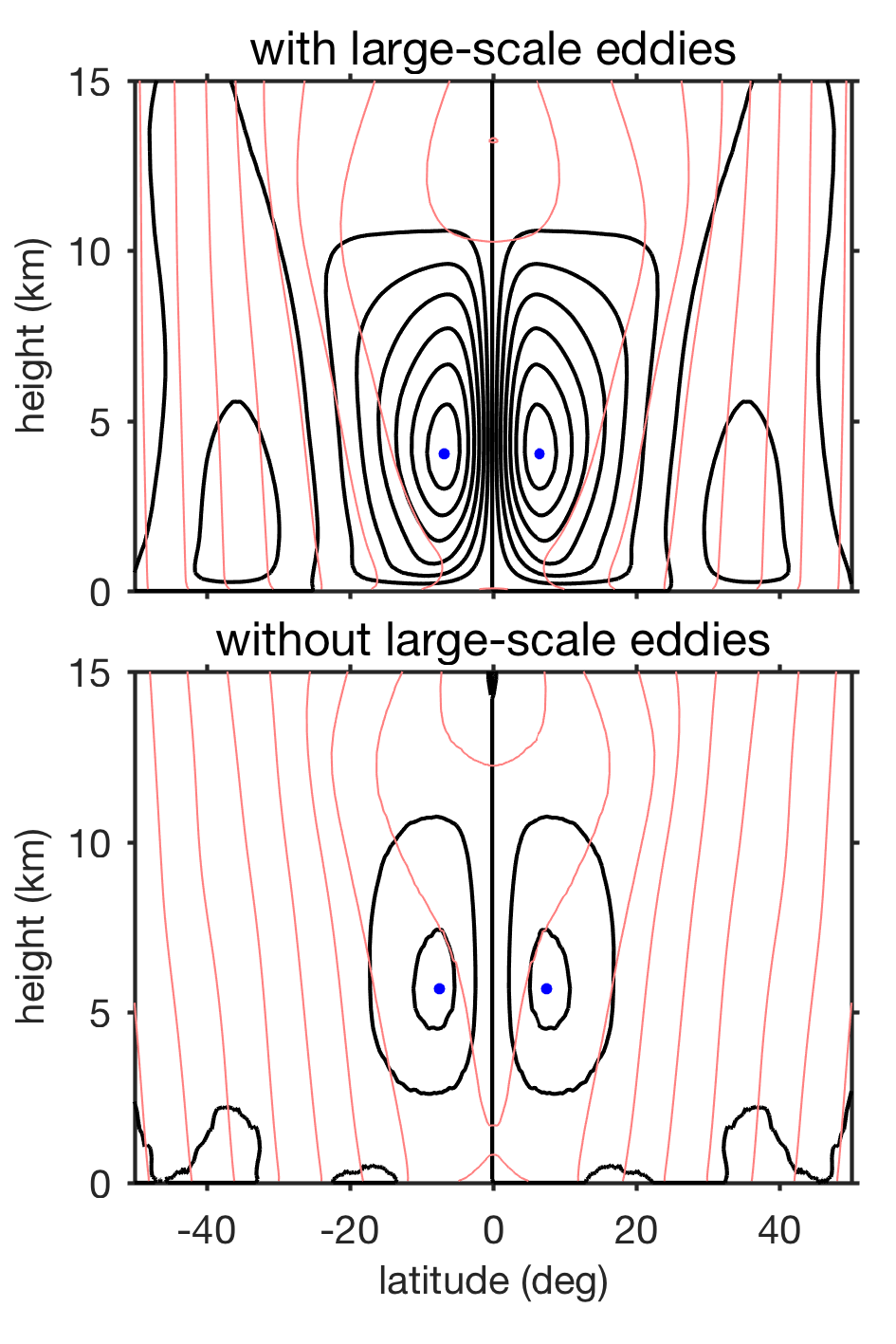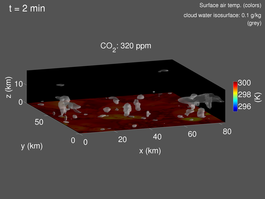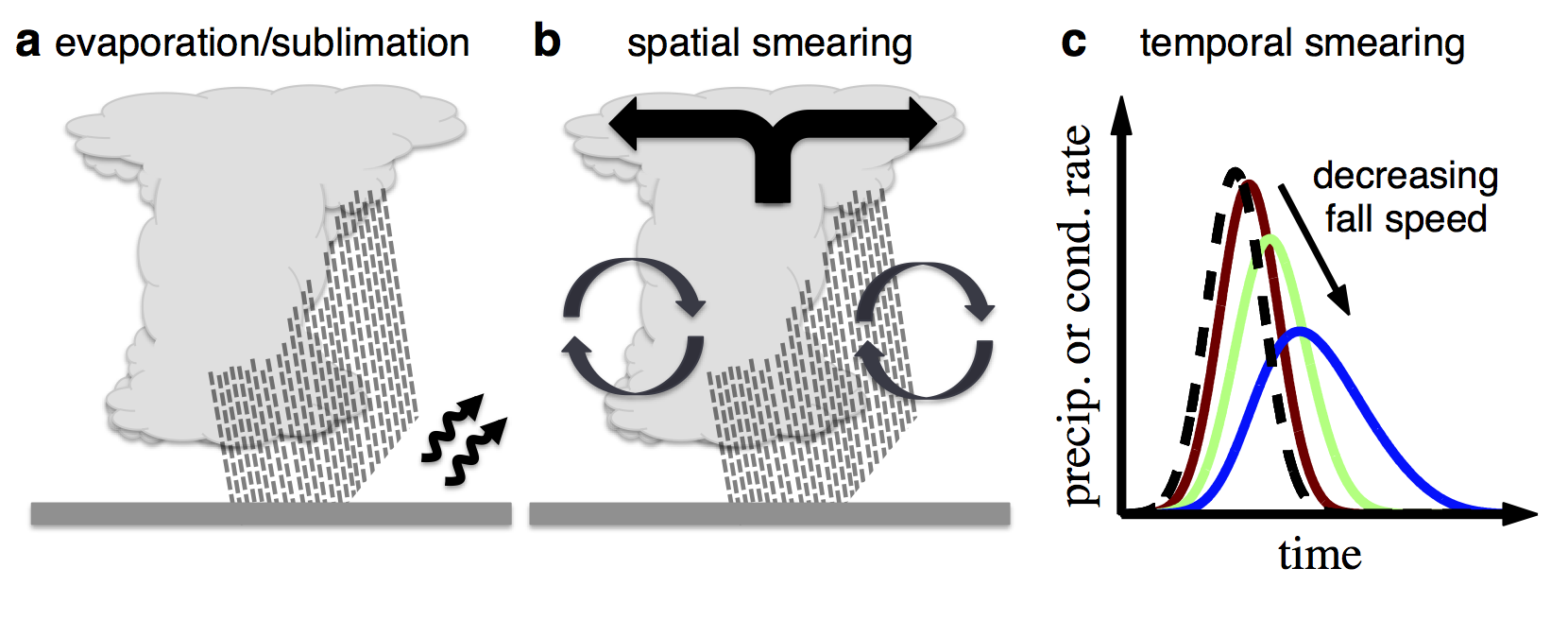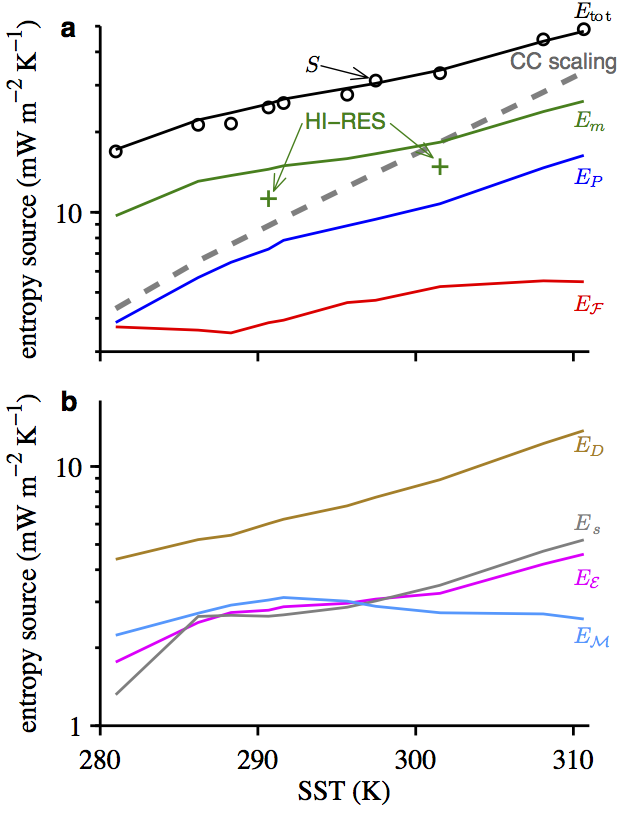 |
One of the most important features of the atmospheric general circulation is the Hadley circulation, a large-scale overturning that consists of rising motion in the deep tropics and descending motion in the subtropics. These motions are responsible for a band of high precipitation near the equator called the Intertropical Convergence Zone (ITCZ) and for the existence of deserts in Earth's subtropical regions. Despite the importance of the Hadley circulation, our understanding of the factors governing its strength and latitudinal extent remain incomplete. Climate models produce Hadley circulations with a wide variety of strengths, and constraining the strength of the Hadley circulation with observations has proven difficult.
One aspect of this problem I am interested in is the interction between large-scale eddies and the Hadley circulation. Eddies influence the Hadley circulation through their transports of energy and momentum, but the relative importance of these transports for the Hadley circulation strength is not well known. My work seeks to use idealized models to understand this interaction, and, in particular, to pull apart the various mechanisms that influence the Hadley circulation. The results have potential implications for understanding monsoon onset. Additionally, since the energy and momentum transports by eddies may change in different ways with warming, this work may help us understand changes in the tropical overturning circulation under future climate change.
Futher reading:
- Singh, Kuang & Tian (2017), Eddy influences on the strength of the Hadley circulation: dynamic and thermodynamic perspectives, J. Atmos. Sci., 74, 467-486.
- Singh & Kuang (2016), Exploring the role of eddy momentum fluxes in determining the characteristics of the equinoctial Hadley circulation: fixed-SST simulations, J. Atm. Sci., 73, 2427-2444.
- Bordoni & Schneider (2008), Monsoons as eddy-mediated regime transitions of the tropical overturning circulation, Nat. Geo., doi:10.1038/ngeo248.
A large proportion of the world's population depends on seasonal rainfall delivered by large-scale tropical circulations known as monsoons. However, future predictions of monsoons, and tropcal precipitation more generally, differ considerably between diffferent climate models. Additionally, climate models cannot quantitatively reproduce known past variations in monsoon rainfall inferred from environmental proxies. One possible reason for this model deficiency is that global climate models have difficulty simulating small-scale circulations associated with convective clouds, and these small-scale circulations have important effects on the large-scale flow.
In my work I use a heirarchy of models run in both idealised and comperhensive cofigurations to further our understanding of how small-scale convective dynamics influence the large-scale flow. In particuar, I am interested in how the diurnal cycle of convection, known to be represented poorly in climate models, may influence circulations on seasonal and longer timescales such as monsoons.
 |
How will the intensity of tropical thunderstorms change in a warmer climate? Climate models do not simulate tropical convection directly, but they produce changes to the large-scale environment that suggest future increases in the strength of convective events. The reasons for these changes have, until recently, remained obscure.
My work seeks to explain the changes in storm environments simulated by climate models in terms of simple theoretical constructs. Such explanations help us to understand to what extent model-based projections of storm behavior may be relevant for Earth's atmosphere in a warmer world. My approach uses a combination of idealised simulations and observational analysis. For instance, I have conducted a number of simulations of radiative-convective equiliibrium using a cloud-permitting model (CM1, maintained by George Bryan of UCAR) over a wide range of surface temperatures. Here you can see some animations of these simulations to get a flavour of how cloud behaviour changes as the surface temperature is varied.
Futher reading:
- Singh & O'Gorman (2013), Influence of entrainment on the thermal stratification in simulations of radiative-convective equilibrium. Geophys. Res. Lett., 40, 4398-4403.
- Singh & O'Gorman (2015), Increases in moist-convective updraft velocities with warming in radiative-convective equilibrium. Q. J. R. Meteorol. Soc., doi:10.1002/qj.2567.
- Romps, et al. (2015), Projected increase in lightning strikes in the United States due to global warming, Science, doi:10.1126/science.1259100.
The intensity of the strongest precipitation events ("precipitation extremes") is expected to increase as a result of global warming. But the magnitude of this increase is uncertain, particularly in the tropics. Simple theory points to an increase in precipitation extremes of roughly 7% per Kelvin of warming, following the increase in near-surface water vapor concentration. But this theory only takes into account thermodynamic effects; dynamic effects may also be important, particularly in tropical regions. Furthermore, my research has shown that, on short time scales, microphysical processes may affect the intensity of preciptiation extremes and how they vary with climate. A better constraint on the rate of increase of tropical precipitation extremes with warming will require a combination of observational, modelling and theoretical approaches.
 |
- Singh & O'Gorman (2014), Influence of microphysics on the scaling of precipitation extremes with temperature. Geophys. Res. Lett., 41, 6037-6044.
- O'Gorman (2016), Precipitation Extremes Under Climate Change, Curr. Clim. Change Reports, doi:10.1007/s40641-015-0009-3.
